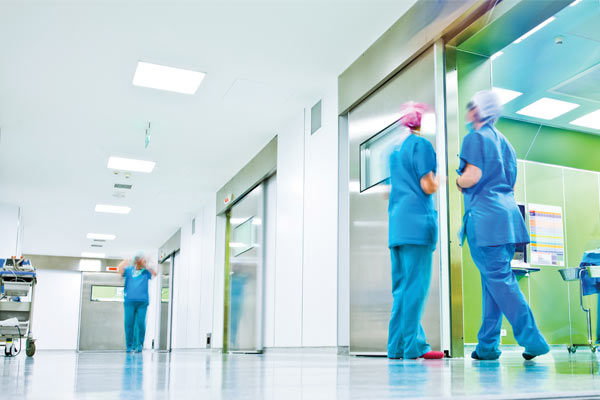Main types of PPE in healthcare
Gloves
Wearing gloves helps protect hands from direct contact with germs and reduce their spread. They are also one of the most sanitary ways to work with medical equipment, surgical tools and fluids.
Hospital cafeteria workers need them to handle food and drinks, packaging and serving utensils. It’s important to remind staff to clean gloves during a regular work shift or switch to a new latex pair. Doing so can help prevent liquids from dripping on the floors and causing potential slip hazards for other workers.
Masks
Masks cover the nose and mouth and can protect against the transmission and inhalation of germs. In surgery, specially fitted masks help stop germs from spreading to others in the operating theatre. Special respiratory masks form a tight seal around the nose and mouth. The most common type of respiratory mask is the N95 (or FFP2). It is most often associated with a decreased risk of germ exposure compared with OR surgical masks.
It is important to note that wearing a mask can affect the wearer’s peripheral vision. In order to help prevent the risk of slips and trips, it’s advised that mask wearers take extra caution while walking or running down corridors. This will help them avoid contact with unforeseen obstacles or encounter any slippery surfaces.
Eye protection (including face shields and goggles)
Eye protection such as face shields, goggles and glasses protect the eyes’ mucous membranes from blood and other bodily fluids. If such fluids come into contact with the eyes, any germs present can enter the body through the mucous membranes. Safety eyewear and face shields may also protect from infectious droplets which can be found in the air.
It is important to warn employees of possible glares and reflections on glasses and goggles as those elements can cause blind spots for the wearer. While wearing these types of PPE in an operating theatre or examination room is necessary, it is vital to take them off when finished. Taking extra precaution when removing eyewear will help prevent missteps and accidental collisions among colleagues.
Clothing (gowns, aprons, head coverings and shoe covers)
Over the last decade or so, employees across many sectors are looking for uniforms made with higher-quality fabrics. It is no surprise as well-made and sustainable materials tend to last longer and are easier to clean. In healthcare, it’s important to wear PPE that is not only durable but is multipurpose. Most PPE will be worn during surgical process and operations and is subject to staining and wear and tear.
Shoe covers, while extremely useful in protecting a staff member’s work shoes, can increase the risk of slips and falls. It is best to take small steps when wearing them and change them as soon as possible if they become wet.
Protective footwear
Last, but certainly not least, healthcare centers need to provide proper footwear for workers. This is so they can move around in and walk safely in areas of increased risk such as kitchens, break rooms and wet rooms. For these types of floors where slip risks are higher, it is recommended employees wear slip-resistant work shoes.
A study published in the British Medical Journal (BMJ) by York researchers has illustrated that the NHS could significantly reduce medical leave among staff. The method of prevention would be to make HSE 5-star grip shoes as a part of their uniforms.
Nurses and doctors are often on their feet for long shifts, which can lead to fatigued muscles and other foot problems. Protective and supportive footwear can help prevent foot muscles from getting overtired. Well-fitting work shoes for healthcare can also protect workers from slip and trip hazards as they navigate their job responsibilities across changing surfaces.





